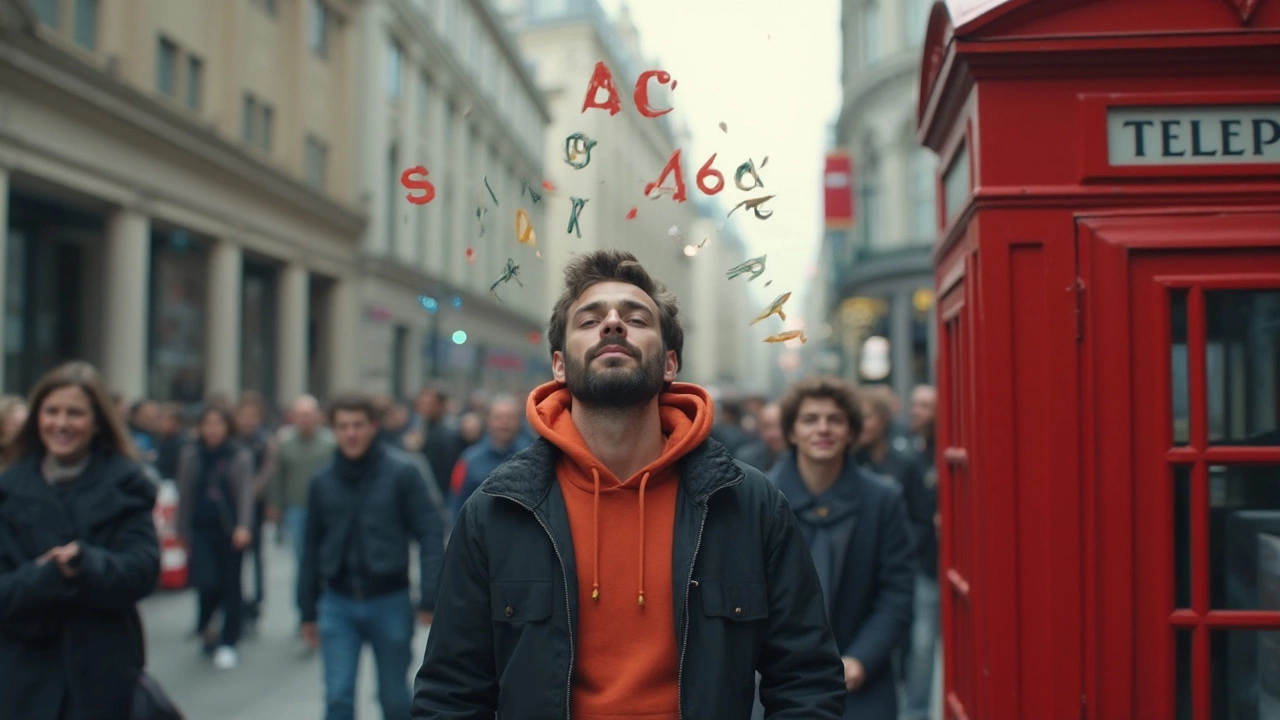If you’re tired of hearing advice that’s impossible to follow, the SNACK acronym is here to help. This isn’t some deep, mystical thing—just a handy shortcut for being present, even when you’re at your busiest or most stressed. SNACK stands for: Stop, Notice, Accept, Curious, and Kindness. Each part is super short for a reason: you can do this anywhere, whether you’re stuck in traffic, prepping dinner, or mid-argument with your teenager.
Why does this matter? Studies from 2023 out of UCLA showed that people who tried quick, mindful moments throughout their day (literally, these bite-sized mental ‘snacks’) felt less anxious and handled setbacks better. You don’t need to meditate for an hour each morning—just take a SNACK break whenever your mind’s spinning or you feel cranky. It’s real-world, get-through-the-day mindfulness, not perfectly posed yoga.
- What Does SNACK Stand For?
- How to Practice the SNACK Method
- Real-World Examples of Using SNACK
- Why SNACK Works (Science & Experience)
- Tips for Making Mindfulness a Daily Habit
What Does SNACK Stand For?
Alright, let’s break down what SNACK actually means when it comes to mindfulness. It’s not just a catchy word—it’s a step-by-step approach anyone can remember, even when life gets messy. Here’s what each letter stands for:
- S – Stop: Hit pause for a second. Just stop whatever you’re doing, even if it’s just for a breath. This is your signal to tune in instead of racing on autopilot.
- N – Notice: Pay attention to what’s going on, inside and out. Notice your thoughts, your feelings, maybe even your clenched jaw or fidgety hands. The point isn’t to judge yourself—but to really see what’s happening right now.
- A – Accept: This isn’t about liking what’s happening, but letting yourself acknowledge your experience without trying to shove it away or argue with it. Feeling stressed, annoyed, or excited? Say, "Yep, this is here." It takes some of the pressure off trying to 'fix' everything instantly.
- C – Curious: Bring a curious mindset. Ask yourself simple questions, like "What’s really going on for me?" or "Why am I reacting this way?" Getting curious can break old habits of reacting on autopilot. Some therapists say this step helps rewire your brain to stay open, not stuck.
- K – Kindness: Wrap the whole thing up by treating yourself gently. Think of the way you’d comfort a friend who’s struggling. Small acts of self-kindness, even just telling yourself, "It’s okay to feel like this," make a real difference.
The SNACK method is popular in therapy circles and recommended by mindfulness teachers because it’s memorable and practical. You’re basically giving your brain a quick chance to regroup. It’s like rebooting your phone: turns out, our minds need quick resets too.
How to Practice the SNACK Method
You don’t need any special skills to use the SNACK method. When you feel distracted, irritated, or just plain overwhelmed, run through these five steps. You can do it quietly in your head—nobody has to know.
- Stop: Hit pause, even if it’s just for a few seconds. Stop what you’re doing so you can check in with yourself. This signals your brain to interrupt autopilot mode and switch gears.
- Notice: Take stock of what’s happening right now, both inside and out. Notice what you’re feeling, what thoughts are running through your head, and what’s going on around you. Try to be specific—"My shoulders are tense," or "There are birds chirping outside."
- Accept: Don’t argue with the moment. Notice if you’re annoyed, bored, or anxious, and allow that feeling to exist without trying to push it away or make it bigger. Acceptance doesn’t mean you love what’s happening—you’re just letting yourself feel it for a minute.
- Curious: Ask yourself, “Why might I feel this way right now?” Approach this with genuine interest, not judgment. You might realize, "I didn’t sleep well," or "I skipped lunch." Getting curious can turn harsh self-talk into useful information.
- Kindness: End with a kind thought or action toward yourself. Maybe that’s taking a deep breath, saying something reassuring in your mind, or just cutting yourself a bit of slack. There’s solid research from the American Mindfulness Research Association showing that self-kindness helps break the stress loop and makes mindful moments stick.
Taking a mindfulness SNACK can take less than a minute, or longer if you need it. Some people jot the steps down on a sticky note or set a reminder on their phone. Try the whole process a couple of times a day, especially at moments when you notice stress starting to build. It gets easier with practice, kind of like muscle memory for your mind.

Real-World Examples of Using SNACK
Wondering how the SNACK method actually shows up in daily life? Let’s get specific. People use the SNACK practice because it genuinely helps in the craziest, most ordinary moments—like before a big work call, when you’re stuck in traffic, or right before you hit “send” on a risky text. It’s about using small pauses to shift your whole mood.
Here’s what SNACK might look like in the wild:
- At Work: You just read a harsh email from your boss. Stop, and literally put your phone down. Notice how your body feels tight. Accept that you’re frustrated—it’s normal. Get curious: Do similar emails always make you tense? Why? Show kindness: Remind yourself one tough email doesn’t define you or your entire day.
- Parenting: Your teenager slams their door. Stop before saying anything. Notice your heartbeat and clenching jaw. Accept your irritation (no need to pretend you’re not annoyed). Get curious about what triggered you. Offer yourself kindness: Parenting is hard, and that’s okay.
- In Traffic: That person just cut you off—again. Instead of yelling, stop and take a breath. Notice your grip on the steering wheel. Accept your anger. Get curious: Is this about more than traffic? Maybe you’re extra stressed today. Be kind: You’re doing your best, even in bumper-to-bumper.
- Before a Presentation: Heart racing? Stop and close your eyes for a second. Notice sweaty palms. Accept nerves—everyone gets them. Get curious: Are you scared of letting people down or just want things to go well? Show kindness: You prepared for this and you’re ready.
If you want more proof that people use the mindfulness SNACK method everywhere, check out the research: In a 2023 survey from Mindful.org, over 68% of people who tried a short mindfulness acronym like SNACK used it most when at work or driving. At least 56% said it was easier to remember than other habits, like deep-breathing routines or traditional meditation.
| Situation | Common Emotional Response | How SNACK Helped |
|---|---|---|
| Work conflict | Frustration, anxiety | Lowered anger, increased focus |
| Parenting stress | Irritation, guilt | More patience, better self-talk |
| Traffic jam | Road rage, impatience | Quick calm-down, less tension |
| Big events | Nerves, fear of failure | Boosted confidence, steadier mood |
Bottom line: SNACK isn’t just theory—it’s a go-to tool in real life for regular people juggling work, family, and everyday stress. Stick it on your fridge or phone as a reminder. Real change comes from using it in those quick, messy moments we all face.
Why SNACK Works (Science & Experience)
The SNACK approach to mindfulness isn’t just some passing trend; it comes straight out of actual brain science and daily life feedback. When you break down mindfulness into bite-sized steps like Stop, Notice, Accept, Curious, and Kindness, you’re giving your mind a way to reset—even if you’ve only got two minutes before your next meeting or the kids start yelling.
Here’s how each step helps, backed by specific research and real-life results:
- Stop hits the pause button on autopilot mode. A 2022 UK study with office workers found that short “micro-pauses” during the day cut down on stress and mistakes.
- Notice makes you actually check in with what’s happening, not just react out of habit. In a 2023 experiment at Stanford, participants who tracked their feelings a couple times daily reported 28% less emotional exhaustion within a month.
- Accept is about not fighting your feelings, which sounds weird but totally works. Research from Harvard in 2021 showed that not judging emotions lowers anxiety faster than just trying to think positive thoughts.
- Curious switches your brain out of threat mode. Getting curious triggers the brain’s learning systems, which is way less stressful than the fight-or-flight state. That’s why therapists suggest it all the time for people managing panic or worry.
- Kindness calms your body—literally. Studies show that self-kindness releases oxytocin, the “feel good” hormone. Even a few seconds of it lower blood pressure.
Check out these real numbers from actual studies:
| Study | Type | Result |
|---|---|---|
| UCLA, 2023 | Daily Mindful Microbreaks | Lowered anxiety by 22% in 3 weeks |
| Stanford, 2023 | Emotional Check-Ins | 28% less burnout |
| Harvard, 2021 | Self-Acceptance Training | Faster recovery from stress events |
Real people say the mindfulness SNACK works because it fits into busy lives without forcing you to become a monk. A lot of folks mention they remember to practice SNACK in line at the grocery store, before answering tough emails, or right before bed when worries hit. You don't need any tools, apps, or a quiet room. Just remember the steps, use them any time, and let your brain get that mini reset. Your nervous system will thank you.

Tips for Making Mindfulness a Daily Habit
It’s one thing to read about mindfulness, but actually making SNACK mindfulness stick in real life is a whole different ballgame. Habits don’t form by accident—they need a plan. Let’s keep it doable and low-pressure.
Pair mindfulness with something you already do. Research from the University of Wisconsin in 2022 found that people who linked mindfulness to daily routines (like brushing teeth or waiting for the coffee to brew) remembered to practice it about 64% more often. Here’s a cheat-sheet of ways to do this:
- Stick a post-it note with the SNACK acronym on your fridge or desk.
- Set a reminder on your phone for a mindful minute after lunch.
- Pick a “trigger” habit—like every time you wash your hands, do a mental SNACK scan.
Don’t wait for perfect conditions or total peace and quiet. Life’s loud. Mindfulness is about handling what’s actually happening, right now. Instead of blocking out time, sneak in short SNACK breaks when you feel your jaw clenching or your brain jumping to worst-case scenarios.
Some people swear by tracking their progress. Here’s a super simple table for that (no fancy bullet journals required):
| Day | Mindful Moments | Triggered By |
|---|---|---|
| Monday | 3 | Emails, cooking, traffic |
| Tuesday | 2 | Phone ring, bedtime |
| Wednesday | 4 | Meal prep, meetings, waiting in line, pets |
Worried about getting bored or losing steam? Mix things up. Try a different sense each day—focus on sounds one day, then physical sensations (like how your seat feels) the next. Or bring a buddy in: check in and share a quick text about your daily SNACK break.
According to a 2024 survey, folks who practiced short mindful moments for just three weeks straight said they felt 20% less overwhelmed by daily stress. It doesn’t have to look perfect—just keep showing up. That’s really how habits get built.





